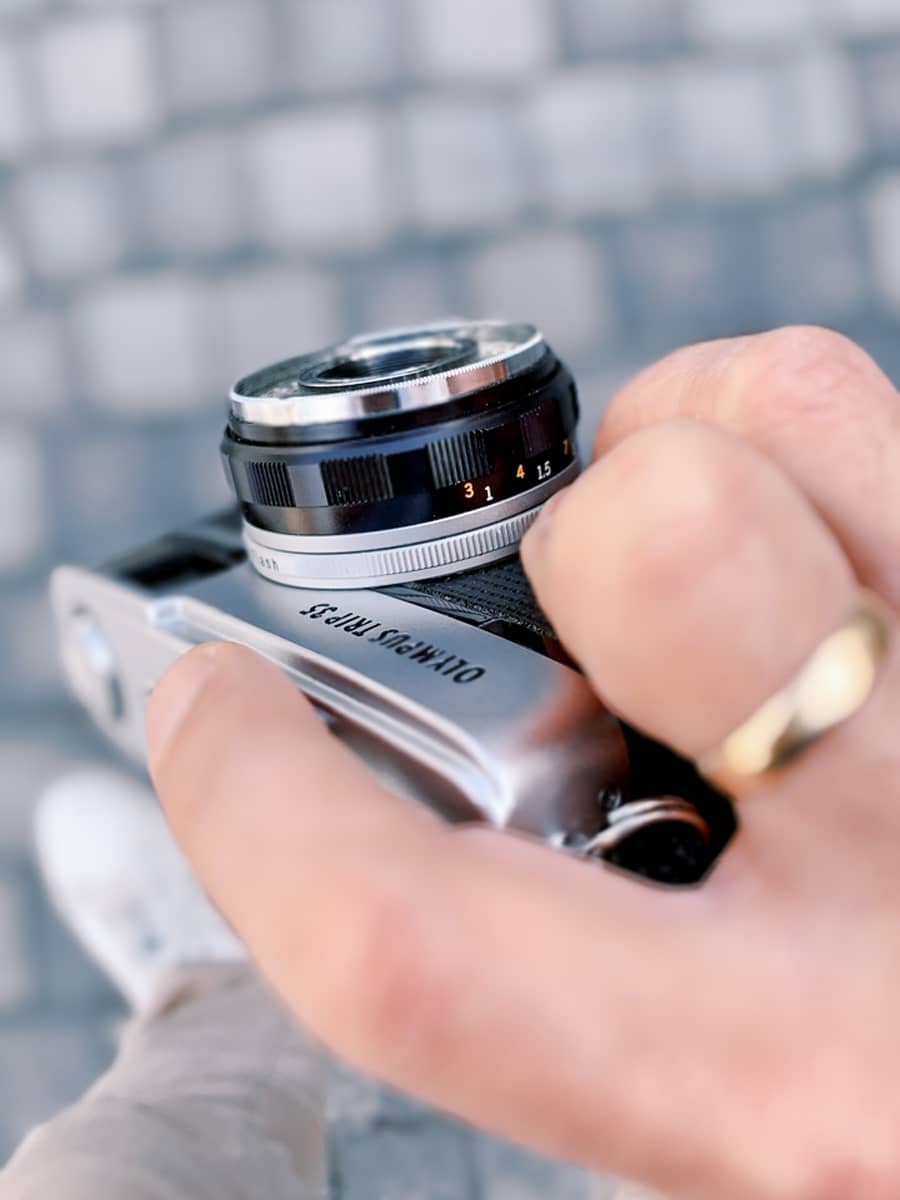We “take” a photograph. We “snap” it. We “shoot” it. Whatever the case, we seem to hunt for it, because, all of the above are nothing but hunting terms.
Today I discovered my very first camera, an Olympus Trip 35. It looks exactly like you would expect something that was made in the 80s. I loaded it with some Kodak Colorplus 200 film and went on to photograph the street life of my home town.
I think I came back with better observations than pictures (the verdict is still out until the film is processed). What I noticed is that people were much more willing to be photographed as I pointed this tiny camera, rather than any of my gigantic professional cameras. This is a relatively common and trivial observation among photographers. The real question is… why? What lies deeper under this behavioural shift?
I think this is an example of the fact that picture “taking” is never really “taking”. It’s a method of conversation.
The modern camera has almost become a symbol of an act of “hunting”: there is something threatening in the fact that it “takes”, it “targets” it “shoots”. Similarly, the person doing the photographing is often called a “shooter”.
When the machine doesn’t resemble anything the subject has ever seen, then you interrupt that pattern. The person being photographed becomes not someone you take from, but someone who willingly gives. It’s an exchange, as it is supposed to be. Is this not the essence of a good conversation?
Susan Sontag brilliantly writes that “To photograph is to appropriate the thing photographed. It means putting oneself into a certain relation to the world that feels like knowledge-and, therefore, like power.” Photographs, in this sense are miniatures of reality that the photographer “takes” or “collects”.
I say we, photographers, should and could become less of collectors of moments and, instead, use the camera as an extension of our consciousness. We do not take photographs; we make them with the one being photographed. The flow of communication is bi-directional, and it is in this sense that photography becomes something that feels almost physical and conversational. Conversation is perhaps our greatest hope for healing the rifts in human understanding but also for restoring it. When we stop seeing a photograph as something we “take”, we have the opportunity to use photography as a way to say “I care: I see you, but I do not pretend to understand you. Show me, teach me”. Because, most of the times, the very process of making a photograph matters as much (if not more) than the photograph itself.
What we are dealing here withis perhaps something much more conversational than anything the world has ever seen. It is a conversation in three dimensions: the photographer creates and the subject co-creates (instead of merely “participates”), and, finally the viewer, co-creates too through her interpretation of the final photograph. I daresay, not even poetry can eliciting a conversation in all three dimensions! Could it be, then, that photography is one of the most powerful, healing mediums humanity has ever invented?
Could it be, then, that photography is one of the most powerful, healing mediums humanity has ever invented?
The very presence of a camera changes the behaviour of people. The very least we, photographers, can do, is allow people to speak for themselves, rather than impose our own interpretation of reality. Even when working with a model, we need to remind ourselves that s/he is not a complaisant object passively following a brief.
It is a subtle change of attitude, but it is one that can make all the difference.

A parenthesis on this little camera for my fellow photographers. This is a camera that pretty much works on automatic. It has a selenium meter (a selenium meter works without batteries because it creates its own electricity from the light falls onto it). Based on how much light falls on it, it moves a primitive mechanism and selects one of the only two possible shutter speeds this camera allows: 1/40s when it’s dark, or 1/200s when it is bright. It also selects for you an aperture appropriately. Selenium meters notoriously stop working with time, and this sadly happened to my own Trip 35. I hacked it in a very easy way so that it permanently stays at 1/200s and then I selected an aperture manually from the aperture ring on the lens. Since the camera no longer has a meter, I relied on the old Sunny16 rule. So, I set the aperture at f16 for the sunny morning, and at f5.6 for the afternoon. And that’s all there is to it! It is such an easy little camera, my daughter photographed half of the exposures on that roll! All we have to do now is for the film to be processed!



